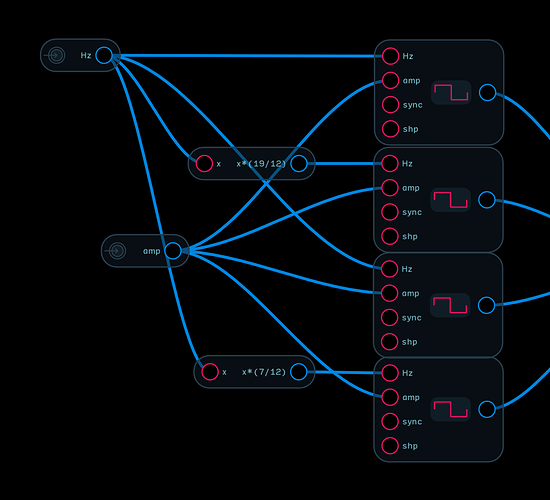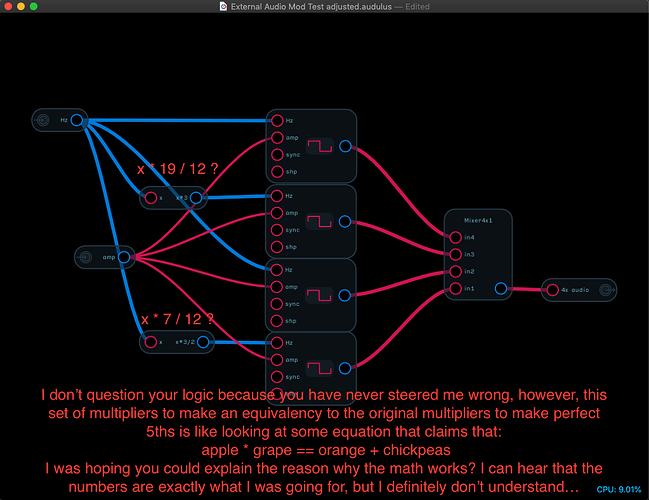Hey everyone! I am having an issue with a patch I built (Er…actually, all patches I have built this way) and I am sitting here scratching my head, but no way that I arrange it seems to allow the sound to linger after the key release, like it would on a hardware synth. I have even tried setting 50 as my release value, and it still kills it like right when I let go of the key.
This doesn’t seem like rocket science when I program it on my hardware, but each time I sit down and start putting the pieces together for my patch(es) in Audulus, I feel like a 3 year old trying to use drafting tools with real expectations that I will somehow come out with a treehouse design that is logical and practical. The patch is below. Is this expected behavior, or am I missing something that’s gonna make me seem (once again) really dense for asking a dumb question? 
External Audio Mod Test.audulus (108.4 KB)
There could be a couple things. You are using the Gate in for the amp, so you are thwarting the adsr you have further down the chain. Also it looks like you want to shift two of your oscillators up a perfect fifth and and an octave and a fifth, butwith Hz you need to use common ratios rather than divisions of 12.
I made some adjustments, let me know what you think.
External Audio Mod Test adjusted.audulus (109.2 KB)
3 Likes
That was it. Thanks Robert! As per usual, and as predicted, I have proven myself to be quite dense haha. I appreciate the assistance! 
1 Like
On a side note, what did you think of my modulation source? That is the thing I was looking at making pseudo channels of audio for. It occurred to me that literally anything can be a modulation source in the OP-1 workflow, and I found it to be quite compelling, so I did my best to create a random, environmentally affected modulation source for the patch, and I really like how it turned out! (Except for the part when I was unable to figure out a simple envelope application)
2 Likes
@robertsyrett I spent a little more time going over the details of the patch last night, trying to soak up all the wisdom my semi-damp and mildew-y brain can pick up from your example, but this part I wanted to ask for clarification for comprehension’s sake, if you have time to provide more info and don’t mind? I will not know how to utilize this concept without knowing why it works, vs the math I did instead, because the substitution is not exactly something my brain can connect as being equivalent:
No Problem!
In pitch space (1/oct) you add to the input to create an interval. In this case if you were to add 7 semitones to a pitch you will have raised the pitch by a fifth. However in frequency space (Hz) you multiply to raise the pitch. A perfect fifth is the ratio of 3:2 so you multiply by 1.5 to raise the pitch a fifth.
Just like you would raise sum pitches to get an octave and a fifth (7+12) you would multiply the ratios (1.5 * 2). That’s how I arrived at x*3 and x*3/2 in the adjusted patch.
3 Likes
Excellent! Thanks so much, Robert! It really helps to know what works, and why it works that way, as I retain information better with something to relate it to in my memory, and the ratio of 1:2 and 2:3 stick pretty well in my memory from a class I took about the math of music making. Thanks again 
1 Like
![]()

